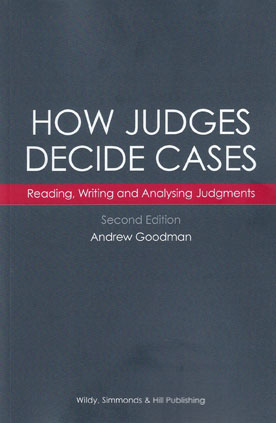
"A really useful resource... highly recommended" Law Gazette
How Judges Decide Cases is a unique and practical guide which looks at how cases are decided and judgments are written.
It examines the style and language of judges expressing judicial opinion and considers the drive for rational justice. The book is founded upon independent research in the form of interviews conducted with judges at every level, from deputy district judges to justices of the Supreme Court, and the practical application of academic material more usually devoted to the structure and analysis of wider prose writing.
This new edition has been revised to take into account modern scientific thinking on bias in decision-making and is generic to all areas of contentious law. Newly appointed recorders, deputy judges, tribunal chairman, lay magistrates and arbitrators as well as experienced practitioners will find it invaluable as a guide to the deconstruction of judgments for the purpose of appeal.